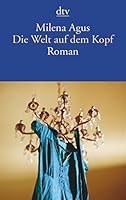You Might Also Enjoy
Book Overview
Customer Reviews
Rated 5 starsThank you Mr. Morrish!
I was given this book, and while parenting advise is often not very welcome, I was thrilled to receive it! I have been searching for alternatives for the"If...then.." (meaning 'If you eat your peas, then you may have dessert, or If you clean your room then you can have a playdate', etc.) trap for a while and as the mother of an expert five year old negotiator needed some guidance. This book is clear, concise, rational, and...
0Report
Rated 5 starsChildren finally come with a manual on how to raise them!
I am a parent of 3 teen-age+ children - 2 pre-teen stepchildren and have managed a pre-school program (57 children) for the past 15 years. This is the first method of discipline in the new age that is useful not only for teachers and parents but also for our children. If everyone were to apply R. Morrish's intelligent and common sense methods our future generations would be our pride instead of our sorrow. Our children...
0Report
Rated 5 starsMaking discipline make sense
Morrish walks the reader through the 12 keys that truly unlock our children's potential to be responsible and successful in life....I found his approach "parent-friendly" and would recommend it to anyone with children or planning to have children
0Report
Rated 5 starsA must for every parents or teacher
If you are looking for a how to guide for disciplining children at home or in the classroom, this is the book to read. Simple, common sense suggestions to help teach children the value of respect, reason for rules etc...
0Report
Rated 5 starsGreat Book On Discipline
As reviewed by Marjan Glavac for the Busy Educator's NewsletterRon Morrish, author of "Secrets of Discipline 12 Keys for raising responsible children" has been an educator and behaviour specialist since 1972. His workshops and presentations have helped countless parents and teachers improve their skills for raising responsible children. Ron starts out with a very simple question: What has happened to discipline? ...
0Report











































